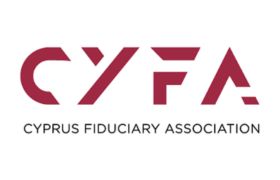In the wake of the collapse of FTX, which was ranked as the world’s third-largest cryptocurrency exchange just days before declaring bankruptcy[1], this is a concise attempt to comprehend what caused the downfall of the cryptocurrency giant in layman’s terms and appreciate the lack of regulatory oversight, auditing and corporate governance failures exposed from this saga.
To begin with, in order to understand the collapse of FTX and its impending overwhelming impact on the crypto market, oversimplified information about its complex corporate structure needs to be provided which according to the bankruptcy filing contains more than 120 companies in various jurisdictions[2]. Mr. Sam Bankman-Fried (SBF) is the founder of Alameda Research, the cryptocurrency hedge fund and FTX Trading, the cryptocurrency exchange. In early October 2022, FTX was valued at around $32 billion[3]. It is equally important to note, that FTX was also the issuer of a cryptocurrency token named FTT. The issuance of cryptocurrency tokens by cryptocurrency exchange firms is common practice. Owners of FTT were promised various benefits for purchasing the token, such as discounts on trading and a guarantee that FTX would use portion of the profits to buy back the FTT token, which would therefore have a positive impact on the value of FTT[4].
At the epicentre of FTX’s catastrophic demise is the revelation in regard to the dynamics of the relationship between Alameda and FTX. Alameda traded heavily on FTX’s crypto platform often profiting from loss of its clients[5]. Indeed, it accounted for the majority of trades of the FTT token in constant efforts for manipulation of its value. Through spreadsheets provided to FTX regulatory and legal team by SBF it was revealed that Alameda started borrowing money from FTX, which includes an amount which could exceed $10 billion in client assets[6], and in return Alameda provided FTT tokens. Essentially, Alameda used FTT tokens as collateral in order to secure loans from FTX, made possible from the assets provided by their clients to, among others, fund its trading activities[7]. In broader corporate terms, a company was using its own equity as collateral to facilitate loans. As a result, inevitable liquidity issues arose from siphoning off client assets, which led to solvency problems, due to the need to quickly sell assets, which were consequently undervalued in order to address the said liquidity issues.
Undoubtedly, this practice is contrary to the terms of service that the clients had to accept to use FTX’s trading platform, as they provide that as a trader “Title to your Digital Assets shall at all times remain with you and shall not transfer to FTX Trading“, “You control the Digital Assets held in your Account” and “None of the Digital Assets in your Account are the property of, or shall or may be loaned to, FTX Trading; FTX Trading does not represent or treat Digital Assets in User’s Accounts as belonging to FTX Trading.“[8].
The current CEO and liquidator of FTX, John J. Ray III, who also oversaw the liquidation of Enron (one of the biggest corporate bankruptcies), states within his declaration for the bankruptcy filing that “Never in my career have I seen such a complete failure of corporate controls and such a complete absence of trustworthy financial information as occurred here” and he goes on to describe, “From compromised systems integrity and faulty regulatory oversight abroad, to the concentration of control in the hands of a very small group of inexperienced, unsophisticated and potentially compromised individuals, this situation is unprecedented”, “I understand that many entities, for example, never had board meetings”, “The Debtors [FTX] do not have an accounting department and outsource this function”[9].
As of December 2022, SBF has been arrested by the Bahamian authorities, extradited to the US[10] where he faced eight federal criminal charges including wire fraud, securities fraud, money laundering and a campaign finance violation[11] and he was eventually released from federal custody on a $250 million bail package[12]. Alameda’s CEO and FTX’s co-founder have pleaded guilty to federal offences including the above and agreed to cooperate with the prosecutors[13], while SBF has pleaded not guilty and is set to face trial on the 2nd of October this year[14]. Fortunately for creditors, $5 billion worth of cash and crypto assets that may help in repayment have recently been recovered, although there are still difficulties in liquidating the crypto assets without affecting the market price of those assets[15].
Fourteen years after the release of Bitcoin, there is no centralised regulatory regime for cryptocurrencies in the US. The majority of cryptocurrencies are overseen by the Securities and Exchange Commission, therefore subject to US securities laws, which as of date has not published a list of attributes in order to clearly define which digital assets can be classified as securities[16]. This creates ambiguity in regard to the applicable regulations in the crypto industry. Effective rules enhancing transparency, combined with the necessary centralised regime to regulate cryptocurrencies may have prevented this disaster or minimised the impact thereof.
The scale of the impact of the FTX scandal on the confidence of investors and the crypto industry as a whole remains to be fully seen, as are the measures to be adopted by regional governments to prevent similar financial disasters through the introduction or amendment of legislation. However, it can be asserted that this is a story of misappropriation of assets provided by clients, corporate structures and convoluted transactions to hide and facilitate the act, insufficient transparency, responsibility, accountability, regulatory oversight, auditing and faulty corporate governance.
Author: Timotheos Stratis













